In traditional Chinese culture, jade was not only it was seen as the object that connected the human and the spiritual worlds but symbolized the political power and social status of those who wore it. In ancient times, jade was used in burial ceremonies where small pebbles were placed in the orifices of the deceased in order to preserve and protect the body. Emperors and members of the aristocracy were entombed in jade burial suits, crafted by tying together small squares of jade with gold, silver, or silk threads.
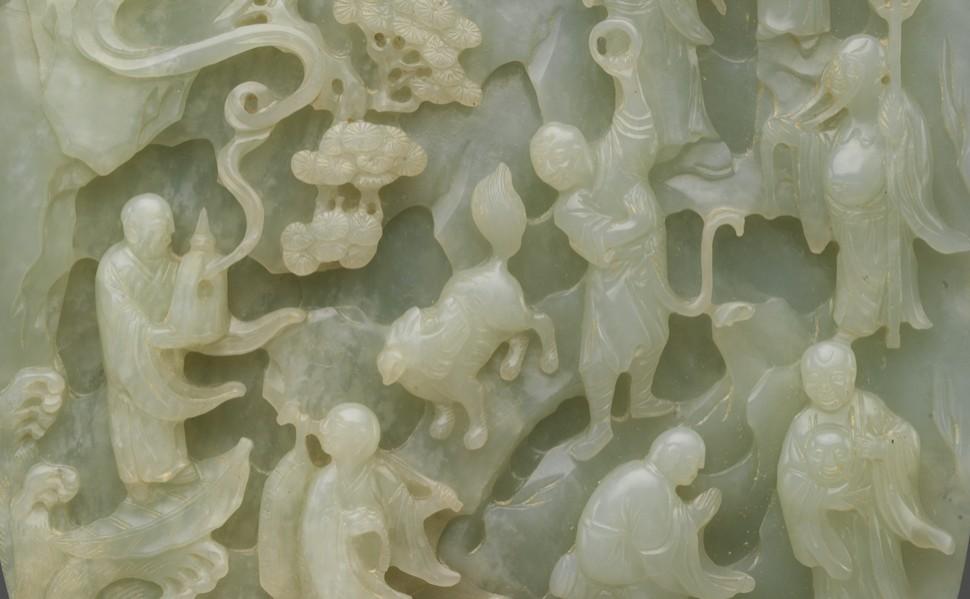
Table screen with landscape scene, Qing dynasty, 18th–19th century, China. Jade.
As a jewel or as a weapon, from China to Mexico, passing through India and New Zealand, jade has influenced the political, social, and economic life of many different cultures around the world. Jade is a general term that is commonly used to refer to two different types of minerals: nephrite, a silicate of magnesium usually classified as soft jade, and jadeite, a harder, much rarer stone made of silicate of aluminum. Extremely hard to carve and with prices that equal, if not surpass, those of diamonds, jade is one of the most appreciated and valued stones. In some countries, such as China, it occupies a special place in the cultural and spiritual life of the people.
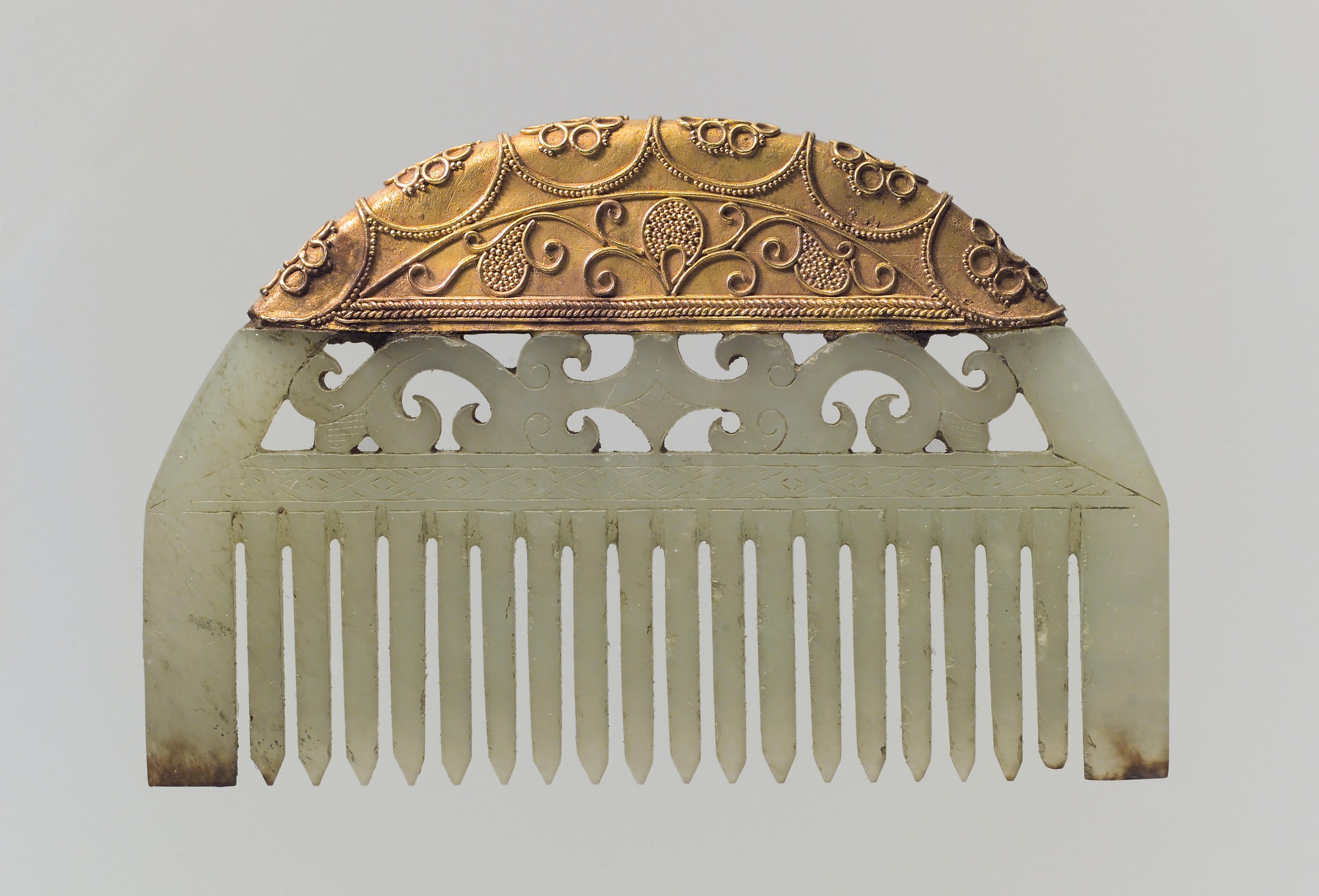
Comb, Eastern Han dynasty (25–220), China. Jade (nephrite) and gold.

Disc (Bi), Western Han dynasty (206 B.C.–A.D. 9), 2nd century B.C., China. Jade (nephrite).
One of the most common funerary objects created from jade was the bi, a flat disc with a hole in the center representing heaven. Used in religious ceremonies by shamas, the bi was found in burial sites of people of high status, usually placed on the chest or the stomach of the deceased.
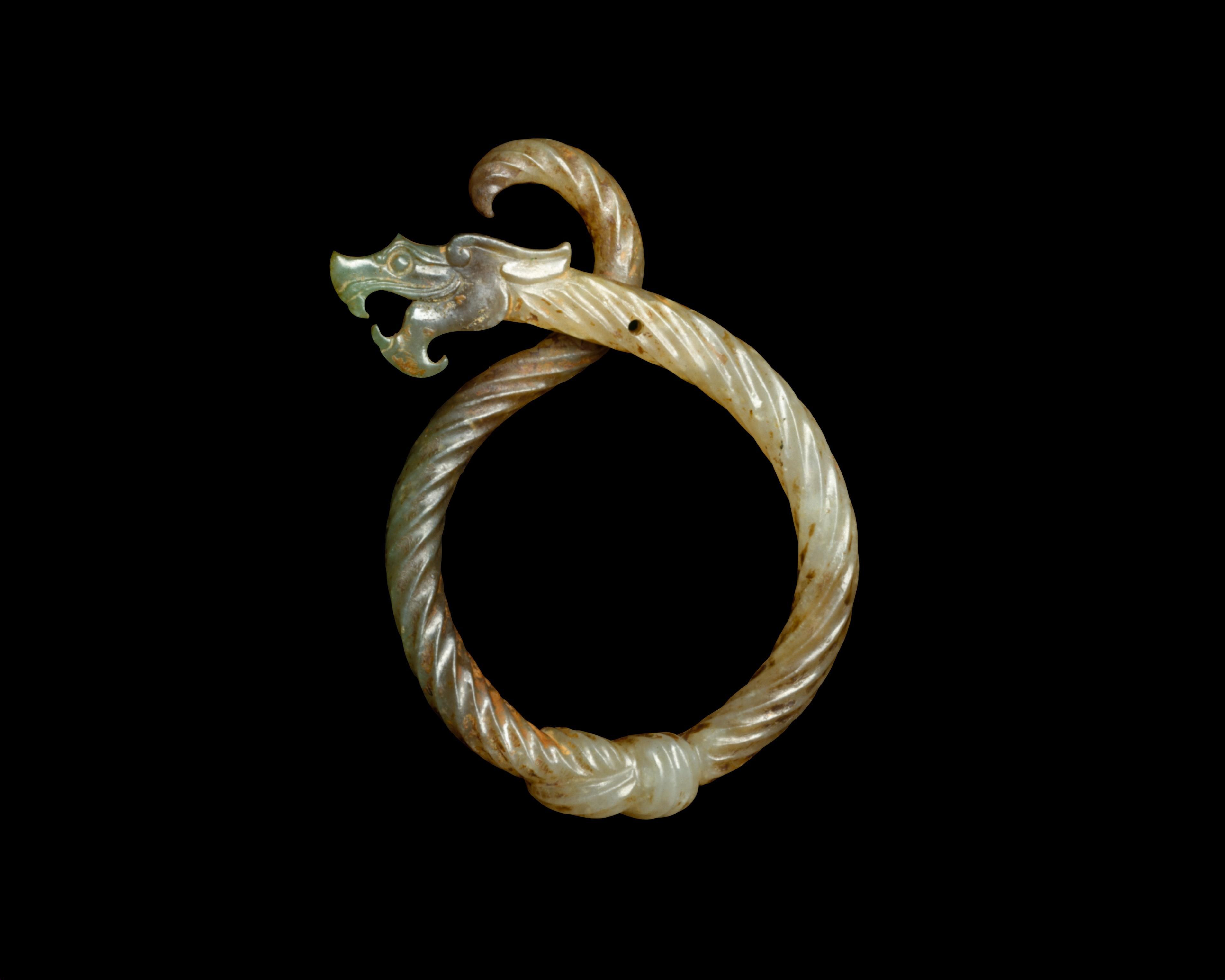
Knotted Dragon Pendant, Eastern Zhou dynasty, Warring States period (475–221 B.C.), 3rd century B.C., China. Jade (nephrite).
The Chinese philosopher Confucius (551–479 BCE) believed that jade embodied the eleven virtues that a wise man should aspire to acquire during his lifetime. Among them, purity, intelligence, justice, loyalty, and sincerity, manifested themselves in the polish, hardness, color, and visible flaws of jade. The cultural and spiritual importance given to this stone is still present in today’s society as many Chinese people believe that a jade ornament will protect its bearer from physical and spiritual harm.
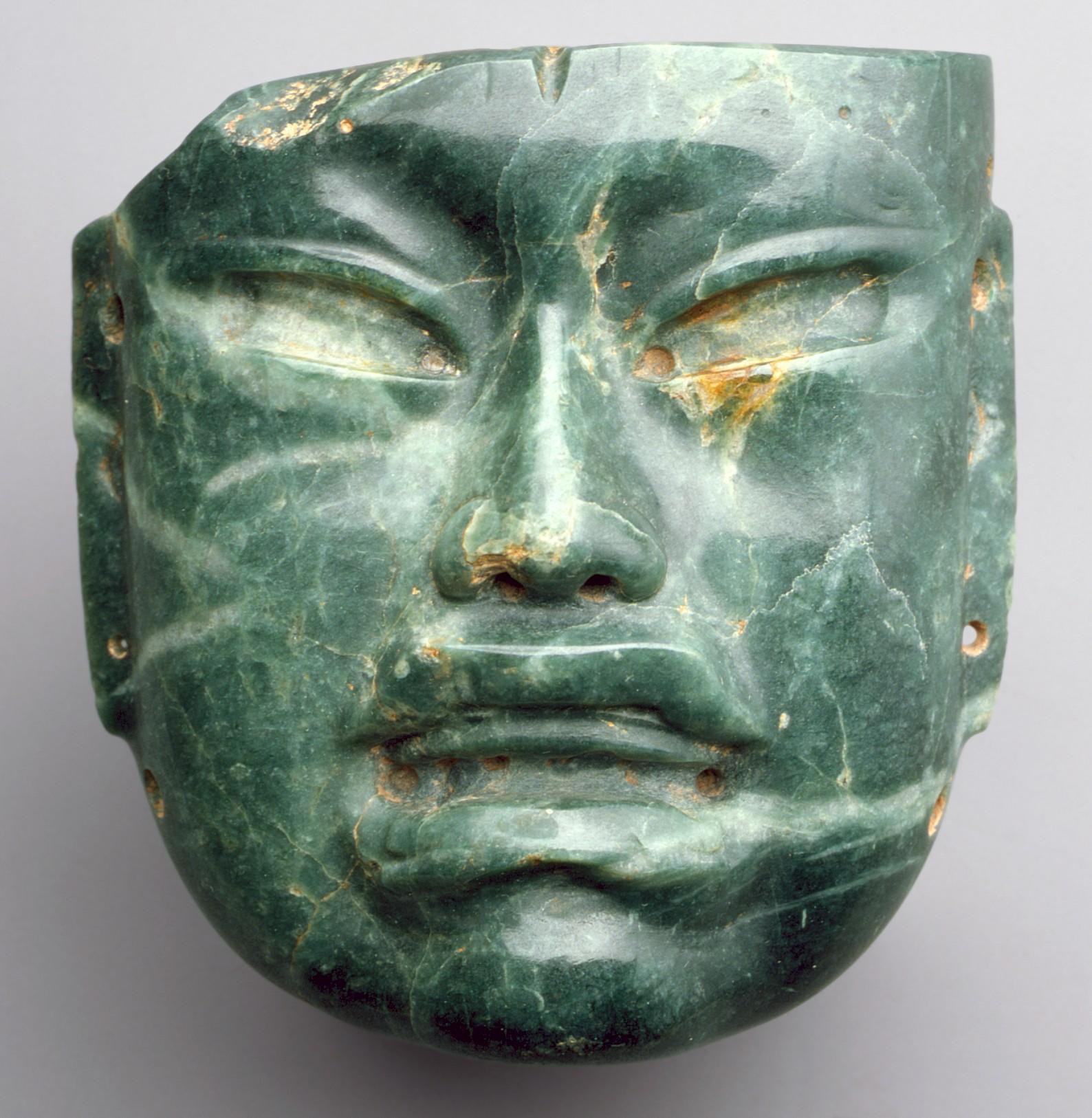
Mask, 900–400 B.C., Mexico, Mesoamerica, Olmec. Jadeite.
Jade was also used widely and cherished by the Mesoamerican people. While nephrite was more common in Asian countries, South America was rich in jadeite deposits, especially in the Motagua River basin located between Guatemala and Honduras. The Olmecs (1600–350 BCE), the first major civilization in Mexico, were the first to produce high quantities of utensils and luxury jadeite objects. The Mayans also created extremely detailed jade objects thanks to their unsurpassed manufacturing skills. While the Olmecs preferred the blue hues of jadeite, the Mayans favored deep green tones.
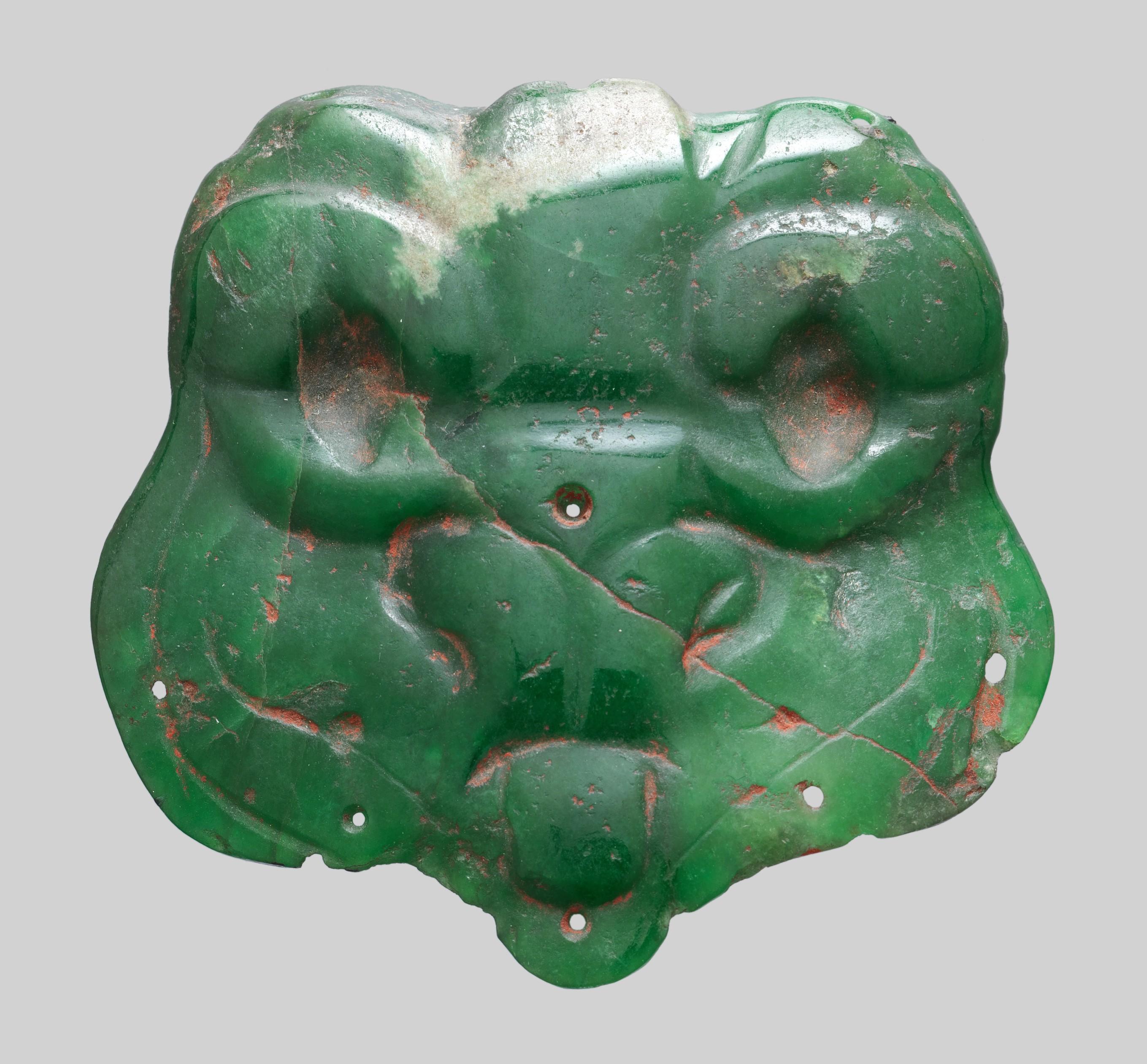
Duck-Face Ornament, 10th–4th century B.C., Mexico, Mesoamerica, Olmec. Jadeite, pigment.
The colors of the stones were important as they symbolized water and maize, the cornerstone of the economic and cultural life of these civilizations, as well as moral virtues and strength. The Mesoamerican people employed jade to create figurines, jewels, funerary masks, tools, and weapons. The custom of placing a jade pebble in the mouth of the dead was also present in the Mayan culture and it was interpreted by scholars as the symbolic planting and rebirth of the god of maize.
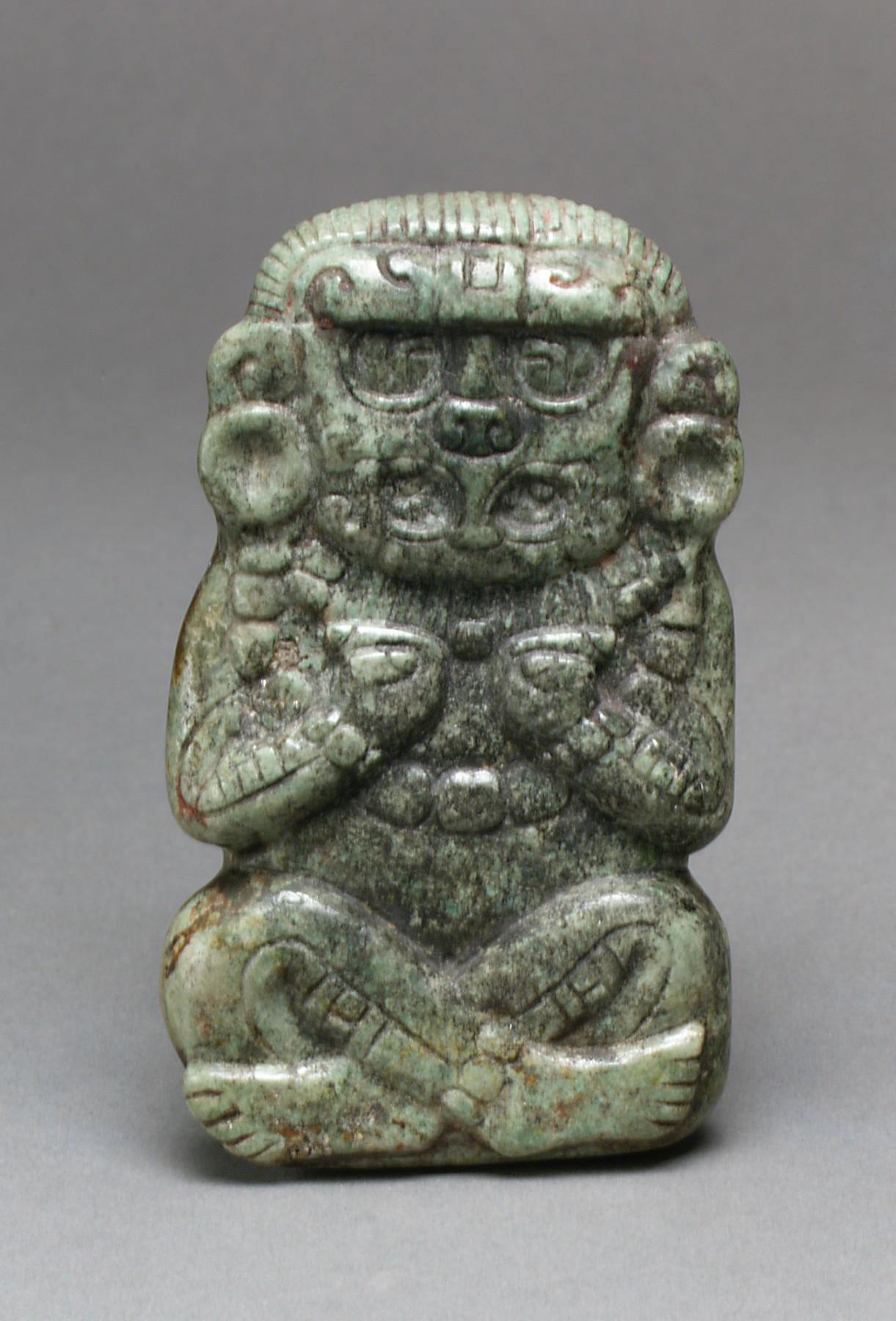
Deity Figure, 3rd–6th century, Honduras, Mesoamerica, Maya. Jade (pyroxene jadeite).
Jade continues to be attractive not only for jewel enthusiasts but also for those who are looking for a good investment. The proof that jade never lost its appeal can be found in the record-breaking auction that took place in April 2014 at Sotheby’s Hong Kong. At the auction, the French luxury conglomerate Cartier bought a jadeite necklace for the unprecedented amount of $27.44 million. The necklace, which had belonged to the American socialite Barbara Hutton (1912–1979), consisted of twenty-seven jadeite beads with a gold clasp set with rubies and diamonds. It seems that the old Chinese saying “Gold has a value; jade is invaluable” still holds true.
























